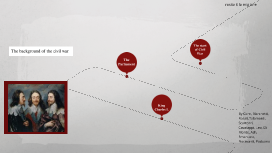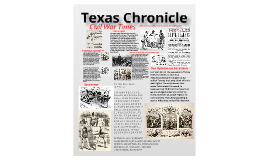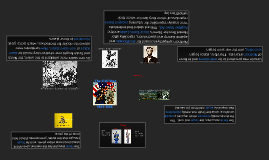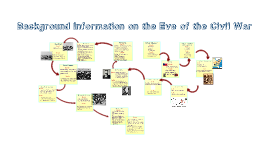Background Info Civil War
Transcript: South North Had 75% of the nation's wealth-banking, manufacturing, shipping Washington D.C. Strategies South Significantly fewer railroads Battles fought away from home. Less skills in the military arts. Thousands of immigrants fighting for no purpose that made sense to them. Farm acreage: 65%, dominant crops-wheat and corn Divided politically (e.g. Copperheads) South 11 states 9 million (3.5 million were slaves) To gain independence To save the "Southern Way of Life"-which included slavery. South Most were West Point graduates. Few Union generals were effective in leading Union armies until U.S. Grant's rise during 1862-1864. Traditionally protecting their homes and way of life. Fought on their own land, which they therefore knew better than their opponents. Military tradition: every male citizen skilled at riding horses and using rifles. Violence was a traditional aspect of Southern society North Bring the South back into the Union ASAP Never recognize the South's independence or its "right" to leave the Union. Strangle the South with a naval blockade (Anaconda Plan) Defeat Rebel armies, split South in two, and capture Richmond. Industrial Development Federals, Yanks, Billy Yanks, Yankees Abraham Lincoln had extensive experience as a lawyer, limited experience in Congress, and virtually no military experience North South Perhaps the South's greatest advantage. Brilliant, bold military leaders from Virginia Military Institute (VMI), West Point, and other academies. Confederacy, Confederate States of America, CSA Rebels, Rebs, Confederates, Graybacks, Butternuts, Johnnies North South very little industrial development, mostly an agrarian economy Railroad Mileage Large navy which grew even larger as the war progressed Stars and Stripes North Background Information on the Eve of the Civil War South Leadership Stars and Bars and a separate battle flag North Names for troops South South North Capital 23 States 22 million South North North North North Flag Cause for fighting Union, United States of America, Federals, U.S.A. had 92% of the nation's industries Other Names To preserve the Union-at first Later the emancipation of slaves became a cause Richmond, Virginia-after a brief period in Montgomery, Alabama Virtually no navy at the start of the war. Jefferson Davis had been senator from Mississippi and secretary of war; he also had military experience during the Mexican War. South 75% of the nations RR miles Fight a defensive war until the Union no longer has the will to fight. Stress how secession is a parallel with the 13 colonies pulling out of the British Empire in 1776. Capture Washington D.C. South Naval Power Most of the wealth was in land and in slaves South North South Generals North Intangibles North Number of States and Population Financial resources

















